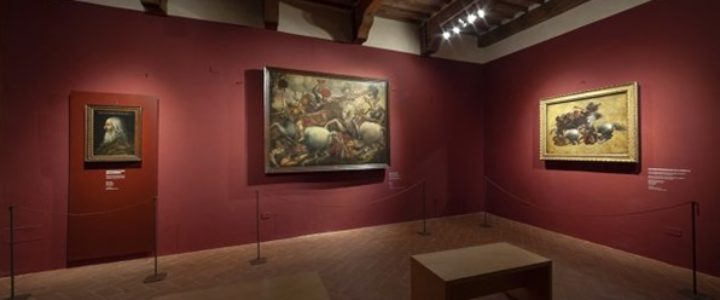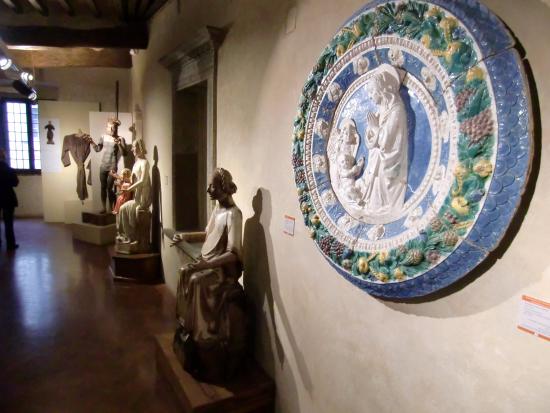
Museum of the Anghiari Battle
Welcome to the only museum that celebrates and recounts the Battle of anghiari and the lost painting of Leonardo da Vinci, together with the history of this ancient village of Tuscany. Prehistory, Roman antiquities, ancient firearms, passing through the crucial Battle of Angles, the museum retraces the evolution of this part of Tuscany through reconstructions, objects, testimonies.The building dates back to the time when anghiari expanded outside the original circle of walls. The complex was located outside the ancient nucleus, behind the disappearance of Porta degli auspici demolished in 1612 (now via Garibaldi, in correspondence with the garden of the museum), where the old ‘carbonaie’ were. It was enlarged and renovated over the centuries, undergoing various modifications. The coat of arms, placed above one of the gates, testifies that the palace belonged to the noble angelieri family, while the name of the building is tied to the statue representing the Florentine marzocco. The lion, symbol of popular sovereignty, was originally placed on the wall of the Piazza del Mercatale (now Piazza baldaccio). It remained there until 1526, the year in which it was placed high on the edge of the palace by ilioneo taglieschi who obtained it from the priories of the Anglo-American Community. In 1944 he fell because of the bombing. The one currently visible is a copy made by Prof. Chegai in the framework of the activities of the former State Institute of art of anghiari, now Liceo Artistico.
Museum of the palazzo taglieschi
The Museum of Palazzo taglieschi is located in a Renaissance building, composed of several tower-houses of medieval origin, which was once the residence of the taglieschi, one of the most powerful families of Anglicans.Since 1975 the palace is the seat of the State Museum that houses works of art, ranging from the XIV to the XVIII century, coming from churches and historical buildings of the Valdtiberino territory. Very interesting is the polychrome wooden sculpture portraying the Virgin, a masterpiece by Jacopo della Quercia (circa 1420) and the Nativity attributed to the workshop of Andrea della Robbia.


